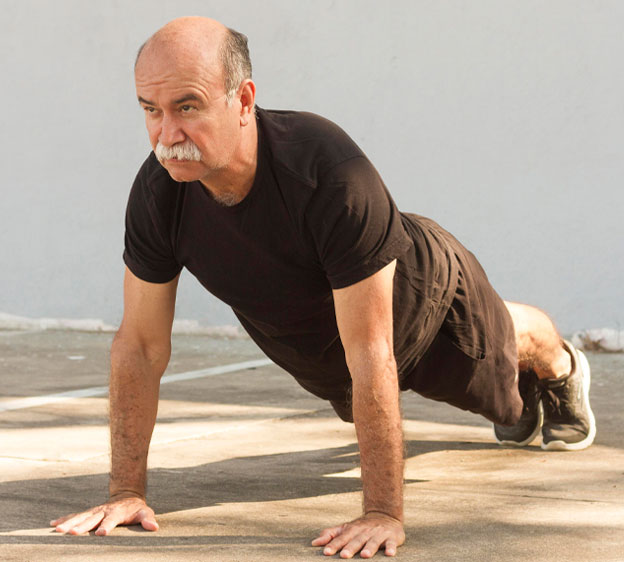
If you have been diagnosed with spinal stenosis, you know that this condition can cause pain and discomfort in your back and neck. Sometimes, this pain can keep you from doing activities you enjoy and living your best life. But thankfully, by doing exercises for spinal stenosis, you can strengthen the muscles and keep discomfort at bay.
Read More: Coping With Chronic Back Pain
The 411 on Spinal Stenosis
Spinal stenosis occurs when the spaces in the spine begin to narrow, putting pressure on the spinal cord and nerves. For most people, this happens gradually, and symptoms develop over time.
“Symptoms of spinal stenosis vary depending on where the narrowing of the spine occurs,” says Mary Descaro, a physical therapist at Beaufort Memorial Outpatient Rehabilitation Services. “Symptoms often get worse when you walk or stand for long periods and get better when you lean forward.”
Common symptoms of lumbar spinal stenosis, which happens in the lower back, include:
- Lower back pain
- Burning pain that travels down your body to your legs
- Tingling, numbness or cramping in your legs and feet
- Weakness of legs and feet
If spinal stenosis occurs in the neck area (cervical spinal stenosis), you might have different symptoms, such as:
- Neck pain
- Numbness or tingling in your arms and hands
- Weakness in your fingers, hand or arm
Exercises for Lumbar Spinal Stenosis
Doing targeted exercises for spinal stenosis in the lower back can help reduce pain and improve flexibility. Physical activity increases blood flow to the area, which helps relieve symptoms, and core strengthening exercises in particular focus on muscles supporting the spine, reducing pressure and increasing your flexibility.
Your doctor may prescribe physical therapy as part of your treatment for spinal stenosis. A physical therapist can show you a range of exercises that focus on strengthening the core, improving range of motion and stabilizing the spine.
Some core-strengthening exercises to help with lower back pain include:
- Bridges: Start by lying on your back with your knees bent, feet flat on the floor and hip-width apart. Keep your arms at your sides. Then lift your buttocks off the floor and hold while squeezing your abs and glutes. Hold briefly and slowly return to the starting position. Repeat 10 times.
- Planks: Lie on the floor facedown with your forearms resting on the floor. Then raise your body off the floor while pushing into your forearms, forming a straight line from your head and neck to your feet. Without letting your hips rise or sag, hold this position for up to 30 seconds.
- Modified planks: Balancing on your hands and knees, with your feet in the air behind you, squeeze your abdominal muscles and lower your upper body onto your forearms. Make sure your shoulders line up over your elbows and your back is straight. Hold and return to the starting position, repeating 10 times.
- Side planks: Lie on your right side with your legs straight and stacked on top of each other. Place your right elbow under your right shoulder, forearm pointing away from you and hand in a fist. Lift your hips, supporting your weight on your elbow and the side of your right foot and keeping your body in a straight line. Hold for 15 to 60 seconds. You can also begin by doing the exercise from your knees instead of your feet to make it easier.
- Arm and leg raises. Get down on your hands and knees. Reach out in front of you with your right arm while extending your left leg out behind you. Bring your arm and leg parallel to the floor. Hold briefly and return to the starting position. Repeat with your other arm and leg. Do the exercise on both sides, 10 times each.
Other exercises that can provide pain relief and lessen symptoms include:
- Riding a stationary bike
- Swimming or other forms of water therapy
- Stretching exercises
- Tai Chi
“These types of exercises are smooth and repetitive, which can be easier on the lower back than high-impact exercises,” Descaro says. “When you have spinal stenosis, it’s a good idea to avoid activities like jogging or contact sports, as well as walking or standing for long periods.”
Find an orthopedic spine specialist at Beaufort Memorial if you are experiencing symptoms of spinal stenosis.
